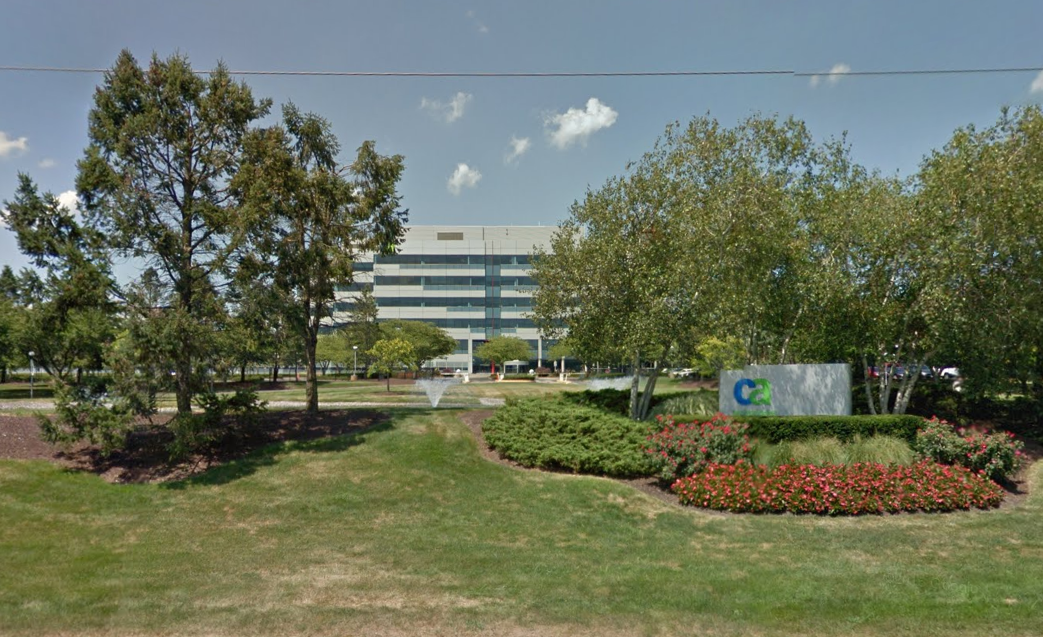Long Island’s Industrial Development Agencies have long been a source of power and patronage for local politicians, yet the IDAs’ effectiveness at actually fulfilling their official function of retaining jobs in the region is questionable at best. Let’s say it’s a dubious work in progress.
From the departure of companies such as OSI Pharmaceuticals, Goya Foods, Arrow Electronics and Symbol Technologies, to the famous exodus of a huge entity like Northrop Grumman, Long Island’s corporate employment pool is ever-shrinking. Newsday reported that since 2003, the Nassau-Suffolk region has lost more than 30 corporations in some form.
While CA Technologies still has a presence at 1 Computer Associates Plaza in Islandia, it’s no longer based on Long Island because its CEO recently moved its corporate headquarters across the East River. More than two decades ago CA got $13 million in low-cost IDA financing, sales tax breaks and property tax abatements. Earlier this month, First Data Corp., a credit-card processing company, announced it was shedding 641 jobs on Long Island. In 2003, the Suffolk IDA had given it more than $3 million in property tax breaks over 10 years to help offset the construction costs of its Melville facility.
Given the drain on the Long Island economy, you’d think policymakers would be scrambling to stop the hemorrhaging. In one sense, they are—by continuing to put their faith in the IDAs to attract, retain and nurture local and regional businesses. But it doesn’t come cheap. One notable exception to the corporate flight is Canon U.S.A., which got a reported $31 million in benefits from the Suffolk IDA, including $18 million in sales tax exemptions and some $13 million in property tax abatements over a 10-year-period for simply moving from Lake Success in Nassau to Melville in Suffolk.
In New York State, legislative action in 1969 allowed for the creation of IDAs to “facilitate economic development in specific localities, and delineating their powers and status as public benefit corporations.” According to a 2006 report from the State Comptroller’s office, New York has 115 active IDAs, at least one in each county, as well as in cities, villages and towns. In Suffolk County, Babylon, Brookhaven, Islip and Riverhead towns also have their own IDA, while in Nassau, Glen Cove and Hempstead Town do.
Ask Paul Sabatino, a former chief deputy Suffolk County executive in the Steve Levy administration, about these Industrial Development Agencies, and his voice tenses up as he calls them a collective “poster child for crony capitalism.”
Sabatino, an outspoken critic of the concept, was quick to note that “every dollar given by IDAs is a dollar taxpayers need to pay.”
The money is freely handed out by Long Island’s IDAs. According to New York State Comptroller Thomas DiNapoli, our IDAs were among the most active regions in the state in 2013, granting $114.1 million in tax breaks to 851 projects. The results of these efforts reportedly generated 40,092 jobs valued around $9.9 billion, resulting in $3,506 in tax exemptions per job gained.
But it’s worth taking a closer look. Suffolk County’s IDA granted $644 in tax breaks for every job gained, while Nassau’s IDA granted a ludicrous $23,611 in tax breaks per job. Nor does the disparity stop there. The Nassau IDA’s effectiveness is also questionable, having generated a mere 1,835 jobs, while the Suffolk IDA allegedly netted 14,080.
Others have joined the growing chorus of IDA critics. Nassau County Comptroller George Maragos issued a press release last year titled “Nassau IDA Needs to Do Better,” which detailed the entities’ “apparent underperformance” and noted that Nassau’s IDA “appears to have created or retained an average of seven jobs per project while Suffolk created or retained about 105 jobs per project.”
Aside from the dubious allocation of money, the Nassau County IDA seems to make doubtful decisions about which projects they believe are worthy of taxpayer subsidy. Thanks to a legal loophole in state law that allows IDAs to grant tax breaks for retail projects as long as they are “related to tourism,” a Costco slated for Oceanside was put on the docket to receive substantive tax breaks, as was Life Time Fitness in Garden City, which was deemed equally appealing to tourists. The IDA took no action on the Costco application after a public outcry about it, but Life Time was a bit more successful, with LIBN reporting at the time that Nassau IDA officials approved a 20-year Payment In Lieu Of Taxes package and authorized up to $2 million in savings on sales taxes.
Nassau County IDA wasn’t the only one to find excuses to go beyond its purview. As helpfully pointed out by Newsday’s Editorial Board, the Town of Babylon IDA granted Tanger Outlets at the Arches in Deer Park tax breaks using the same “tourism” loophole. Joining the chorus, the editorial page of the New York Post weighed in to ask: “Where is the political support for the only truly sensible policy: making New York more attractive to all business investment, without the crony capitalism—and with the same set of rules for everyone?”
Comptroller DiNapoli’s report did produce a tangible result in December 2015 when an IDA reform bill became law. At the time, DiNapoli said, “These measures build upon many of the best practices employed by some IDAs around the state and should reassure taxpayers that private businesses are being adequately scrutinized prior to receiving public support and that communities can recoup benefits if job creation goals are not met.”
Nassau County Comptroller George Maragos hasn’t seen any marked improvement in Nassau’s IDA since the reform was passed. He told this writer that things are “exactly the same as before.” Maragos stressed that his goal “was not to criticize, but to motivate the IDA. The IDA should set forth a vision of how to create an economic engine for Nassau County.”
He wanted the Nassau IDA to conduct public hearings as well as a cost-benefit analysis of the tax-abatement proposals on the table. “If one of their efforts doesn’t hold up to the scrutiny of a public hearing,” Maragos told me, “it shouldn’t be approved.”
But the IDAs’ actual structure may be at issue. According to Sabatino, these entities aren’t about merely preserving Long Island’s business community as designed.
“It’s all about access for the political class,” said Sabatino recently. “The basic economic principles of the IDAs are faulty. You are essentially taking taxpayer dollars to let politicians pick economic winners and losers based on politics and personalities—not objective review.”
This lack of objective review is not only ineffective at fostering growth, it’s harmful for the overall economy. Flexing political power over objective planning ends up making Long Island lose its already dwindling competitive advantage due to the high costs of living here. Even after the subsidies are handed out, the jobs still leave for greener pastures.
For his county to succeed, Maragos said, “Nassau needs to be the best in one or two industries. Low unemployment figures mask the fact that job totals are back to 2008 levels. If we don’t do anything, Nassau’s future won’t be bright.”
But the two sectors our economy does seem to be increasingly relying on are retail and hospitality, which are vulnerable to the business cycle and are not known for producing high paying jobs. Because our policymaking remains fragmented, the Island’s future continues to suffer. The IDAs compete over the scraps while other states beckon our struggling industries with enticing deals. The vested interests that benefit from the status quo here have little incentive to change it. Why would they? They’re more concerned with keeping their fiefdoms in power, as long our taxpayers are willing to foot the bill.
Rich Murdocco writes about Long Island’s land use and real estate development issues. He received his Master’s in Public Policy at Stony Brook University, where he studied regional planning under Dr. Lee Koppelman, Long Island’s veteran master planner. Murdocco is a regular contributor to the Long Island Press. More of his views can be found on www.TheFoggiestIdea.org or follow him on Twitter @TheFoggiestIdea.
(Photo credit: Google Maps)

































